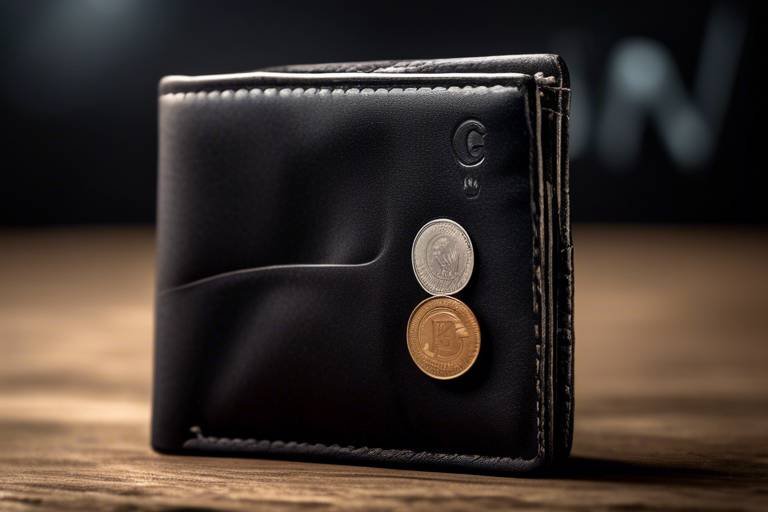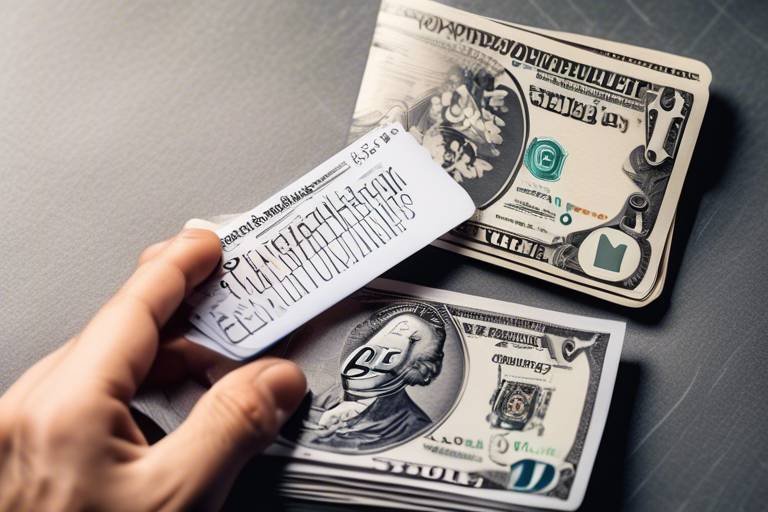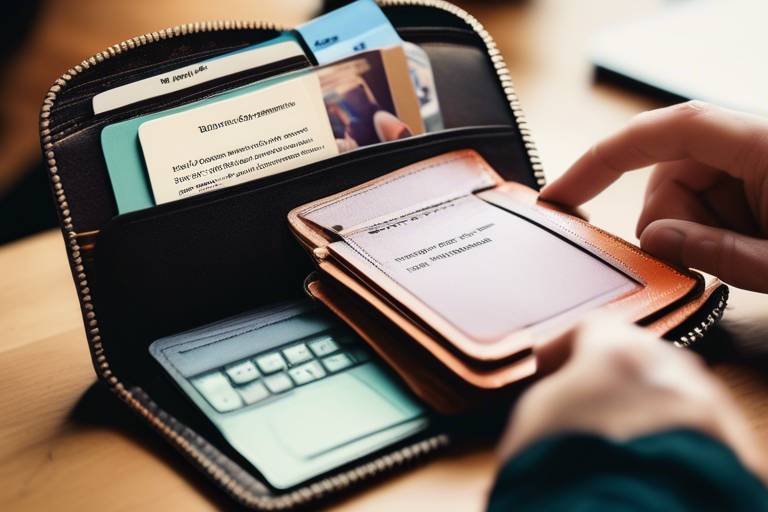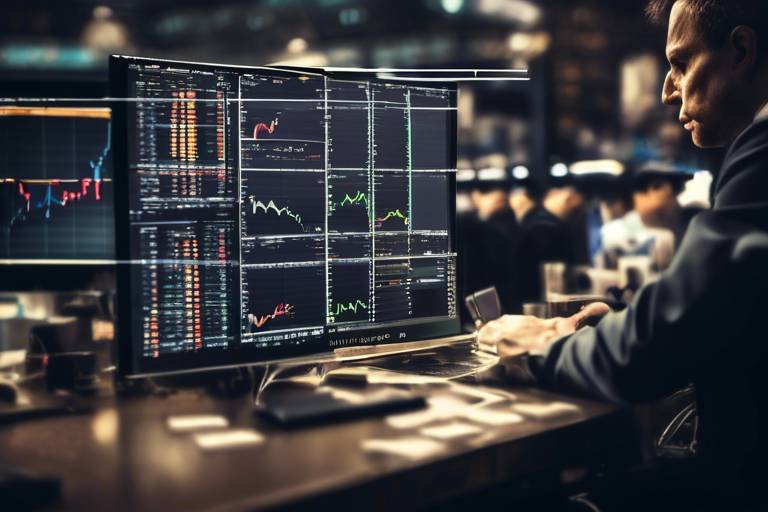How to Navigate the Complexities of Wallet Security
In today's fast-paced digital world, the importance of wallet security cannot be overstated. As we increasingly rely on digital wallets for transactions, the risks associated with them have become more pronounced. Imagine your digital wallet as a treasure chest filled with valuable assets; just as you wouldn't leave a physical treasure chest unlocked in a public space, you shouldn't leave your digital wallet vulnerable to cyber threats. This article explores essential strategies for ensuring the security of digital wallets, highlighting various threats and solutions to protect your assets in an increasingly digital world.
Different types of wallets exist, each with unique security features and vulnerabilities. Understanding these distinctions is crucial for making informed choices. Digital wallets can be broadly categorized into hot wallets and cold wallets. Hot wallets are connected to the internet, making them more convenient but also more susceptible to attacks. On the other hand, cold wallets are offline and provide enhanced security, though at the cost of accessibility. Additionally, wallets can be further divided into software wallets and hardware wallets. Software wallets are applications that run on devices, while hardware wallets are physical devices designed to securely store your private keys. Knowing the differences can help you choose the right wallet for your needs.
As we dive deeper into the realm of wallet security, it's essential to be aware of the prevalent threats that can jeopardize your digital assets. Cybercriminals are constantly evolving their tactics, and understanding these risks is crucial for developing effective security measures. Among the most common threats are phishing attacks, malware, and social engineering tactics. By familiarizing yourself with these threats, you can take proactive steps to protect your wallet and your assets.
Phishing attacks are a common method used by cybercriminals to trick users into revealing sensitive information. These deceptive tactics can take many forms, such as emails that appear to be from legitimate sources, urging you to click on malicious links. Being able to recognize and avoid these tactics is crucial for safeguarding your wallet.
Recognizing the signs of phishing emails can prevent unauthorized access to your wallet. Here are some tips to help you spot suspicious messages:
- Check the sender's email address: Phishing emails often come from addresses that mimic legitimate ones but may have slight differences.
- Look for generic greetings: If the email doesn't address you by name, it could be a phishing attempt.
- Be wary of urgent requests: Cybercriminals often create a sense of urgency to prompt quick action.
By staying vigilant and questioning the authenticity of emails, you can protect your information from falling into the wrong hands.
Adopting safe browsing habits is essential for wallet security. Here are some best practices to minimize exposure to phishing attempts while online:
- Use secure connections: Always ensure you're on a secure network, especially when accessing your wallet.
- Verify URLs: Before clicking on links, hover over them to check the destination URL.
- Install security software: Use reputable antivirus and anti-malware software to protect your devices.
By integrating these habits into your online activities, you can significantly reduce the risk of falling victim to phishing attacks.
Malware poses significant risks to wallet security by compromising devices and stealing sensitive data. Common types of malware include keyloggers, which capture your keystrokes, and ransomware, which can lock you out of your own files. To safeguard against these threats, it’s essential to keep your devices updated and to be cautious about the software you install.
Creating strong, unique passwords is a fundamental step in wallet security. A strong password should be at least 12 characters long and include a mix of letters, numbers, and symbols. Additionally, avoid using easily guessable information, such as birthdays or common words. Utilizing a password manager can also help you keep track of your passwords securely, reducing the temptation to reuse them across multiple platforms.
Two-factor authentication (2FA) adds an extra layer of security to your wallet. This method requires not only your password but also a second form of verification, such as a code sent to your phone. Implementing 2FA is vital for protecting your digital assets, as it significantly reduces the likelihood of unauthorized access.
Conducting regular security audits of your wallet can help identify vulnerabilities. Consider the following checklist for assessing your wallet's security:
- Are your passwords strong and unique?
- Is 2FA enabled on your wallet?
- Have you updated your software recently?
By regularly reviewing your security measures, you can make necessary improvements and ensure your assets remain protected.
Keeping up with the latest security updates from wallet providers is essential for protection. Cyber threats are constantly evolving, and staying informed can help you apply updates promptly to safeguard your assets. Following reputable security blogs can provide valuable insights into emerging threats and best practices.
Following reputable security blogs can provide valuable insights into emerging threats and best practices. Some recommended resources include:
- The Hacker News
- Krebs on Security
- Security Weekly
These platforms often discuss current trends in cybersecurity, helping you stay one step ahead of potential threats.
Engaging in community forums can enhance your understanding of wallet security. Discussions with other users can lead to better security practices and awareness. Platforms like Reddit and specialized cryptocurrency forums are great places to share experiences and learn from others.
In conclusion, implementing the discussed strategies will significantly enhance your wallet security. By understanding the types of wallets, recognizing common threats, and adopting strong security practices, you can safeguard your digital assets effectively. Remember, your wallet is your treasure chest in the digital world; treat it with the care it deserves!
Q1: What is the safest type of wallet for storing cryptocurrency?
A: Cold wallets, especially hardware wallets, are considered the safest for storing cryptocurrency as they are offline and less vulnerable to cyber attacks.
Q2: How often should I change my wallet passwords?
A: It's advisable to change your passwords every few months or immediately if you suspect any suspicious activity.
Q3: Is two-factor authentication necessary?
A: Yes, 2FA is crucial as it adds an additional layer of security beyond just your password.

Understanding Wallet Types
This article explores essential strategies for ensuring the security of digital wallets, highlighting various threats and solutions to protect your assets in an increasingly digital world.
When it comes to digital wallets, understanding the different types available is crucial for ensuring your assets are secure. Just like choosing the right container for your valuables, selecting the appropriate wallet type can significantly impact your security. There are primarily four types of wallets: hot wallets, cold wallets, software wallets, and hardware wallets. Each of these has its unique features and vulnerabilities, which we will explore below.
Hot wallets are connected to the internet, making them convenient for quick transactions. Think of them as your everyday wallet that you carry around. However, this convenience comes with risks. Since they are online, they are more susceptible to hacking and phishing attacks. Examples of hot wallets include web wallets and mobile wallets.
On the other hand, cold wallets are offline storage solutions. They are like a safe deposit box where you keep your valuables away from prying eyes. Cold wallets include hardware wallets and paper wallets. While they offer enhanced security against online threats, they can be a bit less convenient for frequent transactions.
Next, we have software wallets, which can be either hot or cold. These wallets are applications that you can install on your computer or mobile device. They provide a user-friendly interface and often come with additional features such as transaction history and balance tracking. However, their security largely depends on the device they are installed on.
Lastly, hardware wallets are physical devices specifically designed to store cryptocurrencies offline. They are often considered the gold standard in wallet security. With hardware wallets, your private keys are stored on the device itself, making it nearly impossible for hackers to access your funds remotely. However, they can be a bit pricier and may require some technical know-how to set up.
| Wallet Type | Connection | Security Level | Best For |
|---|---|---|---|
| Hot Wallets | Online | Low | Frequent transactions |
| Cold Wallets | Offline | High | Long-term storage |
| Software Wallets | Online/Offline | Medium | User-friendly access |
| Hardware Wallets | Offline | Very High | Ultimate security |
Understanding these wallet types is essential for making informed decisions about how to store your digital assets. By weighing the pros and cons of each type, you can choose a wallet that aligns with your security needs and transaction habits. Remember, the world of digital finance is continually evolving, and staying informed about your options is key to protecting your assets.
- What is the safest type of wallet? Cold wallets, particularly hardware wallets, are considered the safest due to their offline storage.
- Can I use multiple wallets? Yes, many users opt to use a combination of hot and cold wallets for different purposes.
- How do I choose the right wallet for me? Consider factors such as your transaction frequency, security needs, and ease of use.

Common Security Threats
In the digital age, where everything from banking to shopping is done online, the security of your digital wallet is paramount. Just like you wouldn't leave your physical wallet lying around, you must be vigilant about the threats that lurk in the virtual world. Understanding these threats is the first step in safeguarding your assets. Cybercriminals are constantly evolving their tactics, and being aware of the common security threats can help you stay one step ahead. Let's dive into the most prevalent risks that could compromise your wallet's security.
Phishing attacks are among the most common methods cybercriminals use to deceive users into revealing sensitive information. Imagine receiving an email that looks like it’s from your bank, asking you to verify your account details. Sounds legit, right? But that’s precisely how phishing works—it's designed to trick you into entering your personal information on a fake website. Recognizing these deceptive tactics is crucial for protecting your wallet.
So, how can you spot a phishing email? There are several red flags to watch out for:
- Generic Greetings: Emails that start with "Dear Customer" instead of your name are often suspicious.
- Urgent Language: If the email creates a sense of urgency, claiming your account will be locked unless you act immediately, be wary.
- Suspicious Links: Hover over links to see the actual URL. If it looks odd or doesn’t match the supposed sender's website, don’t click it.
By being aware of these signs, you can significantly reduce the risk of falling victim to a phishing attack.
Adopting safe browsing habits is essential. Always ensure that the website is secure by checking for "https://" in the URL. Additionally, avoid clicking on links from unknown sources or public Wi-Fi networks, as these can expose you to phishing attempts. Always think before you click—it's better to be safe than sorry!
Malware is another significant threat to your wallet's security. This malicious software can infect your device and steal sensitive data without you even realizing it. Think of malware as a cunning thief that sneaks into your home and takes what it wants while you’re asleep. Common types of malware include keyloggers, which record your keystrokes, and ransomware, which locks you out of your files until you pay a ransom.
To safeguard against malware, you should:
- Install Antivirus Software: Keep your devices protected with reliable antivirus software that can detect and eliminate malware.
- Update Software Regularly: Regular updates to your operating system and applications can patch security vulnerabilities that malware exploits.
By taking these precautions, you can create a formidable defense against malware risks.
Q: What should I do if I suspect a phishing attack?
A: If you suspect a phishing attack, do not click any links or provide any information. Report the email to your email provider and delete it immediately.
Q: How often should I update my passwords?
A: It's recommended to update your passwords every three to six months, or immediately if you suspect a breach.
Q: Can I use the same password for multiple wallets?
A: No, using the same password for multiple wallets increases the risk of a security breach. Always create unique passwords for each wallet.
Q: What is two-factor authentication, and why is it important?
A: Two-factor authentication (2FA) adds an additional layer of security by requiring not just a password but also a second form of verification, such as a text message or authentication app. This makes it much harder for unauthorized users to gain access to your wallet.
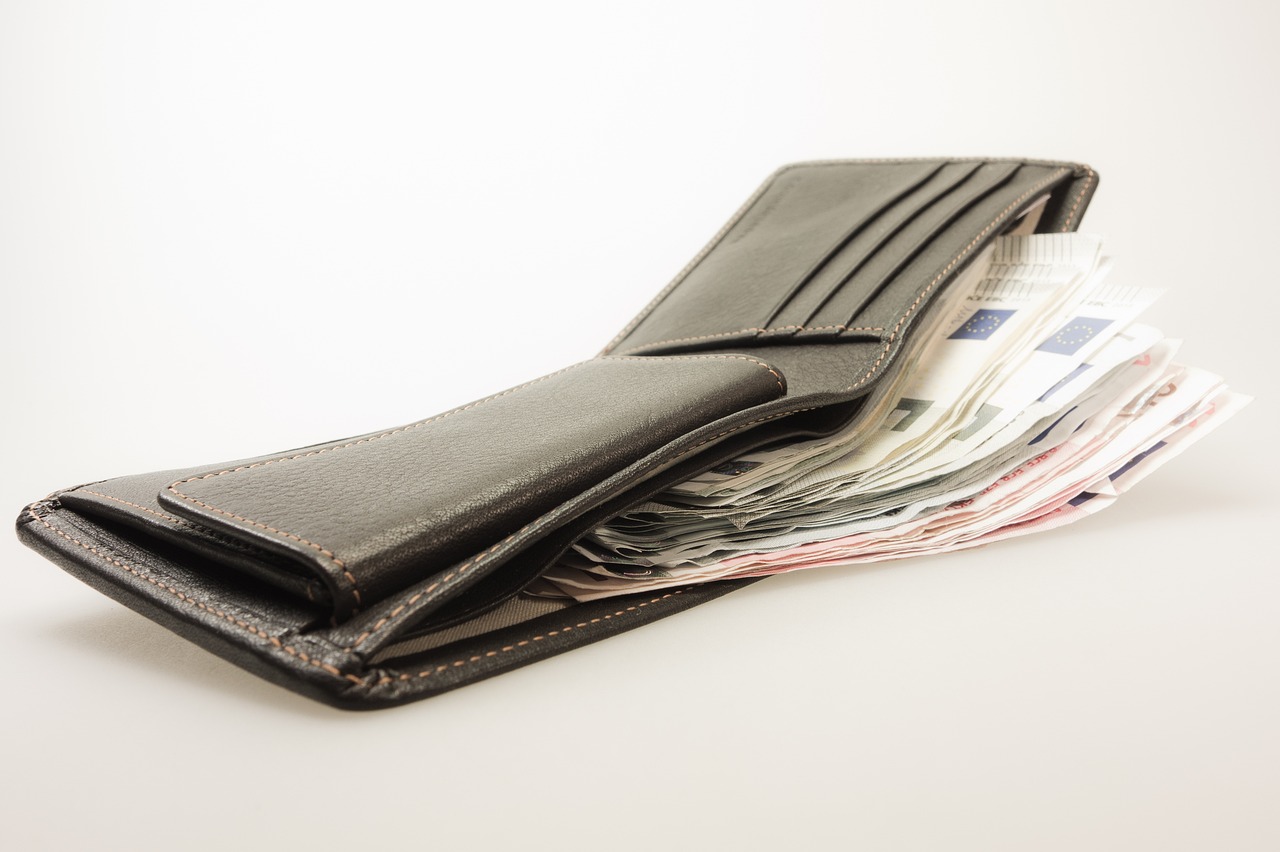
Phishing Attacks
Phishing attacks are like the wolves in sheep's clothing of the digital world. These crafty cybercriminals employ deceptive tactics to trick unsuspecting users into revealing sensitive information, such as passwords and private keys. Imagine receiving an email that looks like it’s from your favorite wallet provider, complete with their logo and formatting. It urges you to click a link to verify your account, but in reality, that link leads to a malicious site designed to harvest your credentials. This is the essence of phishing—manipulation and deceit wrapped in a familiar guise.
To effectively combat phishing attempts, it's crucial to understand how they operate. Cybercriminals often use social engineering techniques to create a sense of urgency. For example, they might claim that your account has been compromised and that immediate action is required. This pressure can cloud your judgment, leading you to click on links or provide information you normally wouldn’t. Therefore, maintaining a skeptical mindset when interacting with unsolicited communications is paramount.
Recognizing phishing attempts can save you from significant financial loss and emotional distress. Here are some common signs to watch for:
- Generic Greetings: Phishing emails often use vague salutations like "Dear Customer" instead of your name.
- Suspicious Links: Hover over links to see the actual URL. If it looks strange or doesn’t match the official site, don’t click!
- Urgent Language: Be wary of messages that create a false sense of urgency, pushing you to act quickly.
- Unusual Requests: Legitimate companies will never ask for sensitive information via email.
Additionally, safe browsing practices can further shield you from falling victim to these attacks. Always ensure that the URL begins with https:// and look for a padlock symbol in the address bar, indicating a secure connection. If you receive a suspicious email, don’t hesitate to verify it directly with the company through official channels. Remember, it’s better to be safe than sorry.
In conclusion, phishing attacks are a prevalent threat in the digital landscape. By staying informed and vigilant, you can protect your wallet and personal information from these cunning schemes. Always trust your instincts; if something feels off, it probably is. Taking a moment to double-check can save you from a world of headaches down the line.
1. What is phishing?
Phishing is a cybercrime where attackers impersonate legitimate organizations to trick individuals into revealing sensitive information, such as passwords or credit card numbers.
2. How can I identify a phishing email?
Look for generic greetings, suspicious links, urgent language, and unusual requests for sensitive information. Always verify the sender's email address and hover over links before clicking.
3. What should I do if I receive a phishing email?
Do not click any links or provide any information. Instead, report the email to your email provider and delete it. You can also inform the legitimate organization being impersonated.
4. Can I protect myself from phishing attacks?
Yes! Use strong, unique passwords, enable two-factor authentication, and educate yourself about common phishing tactics. Regularly update your software and avoid clicking on suspicious links.
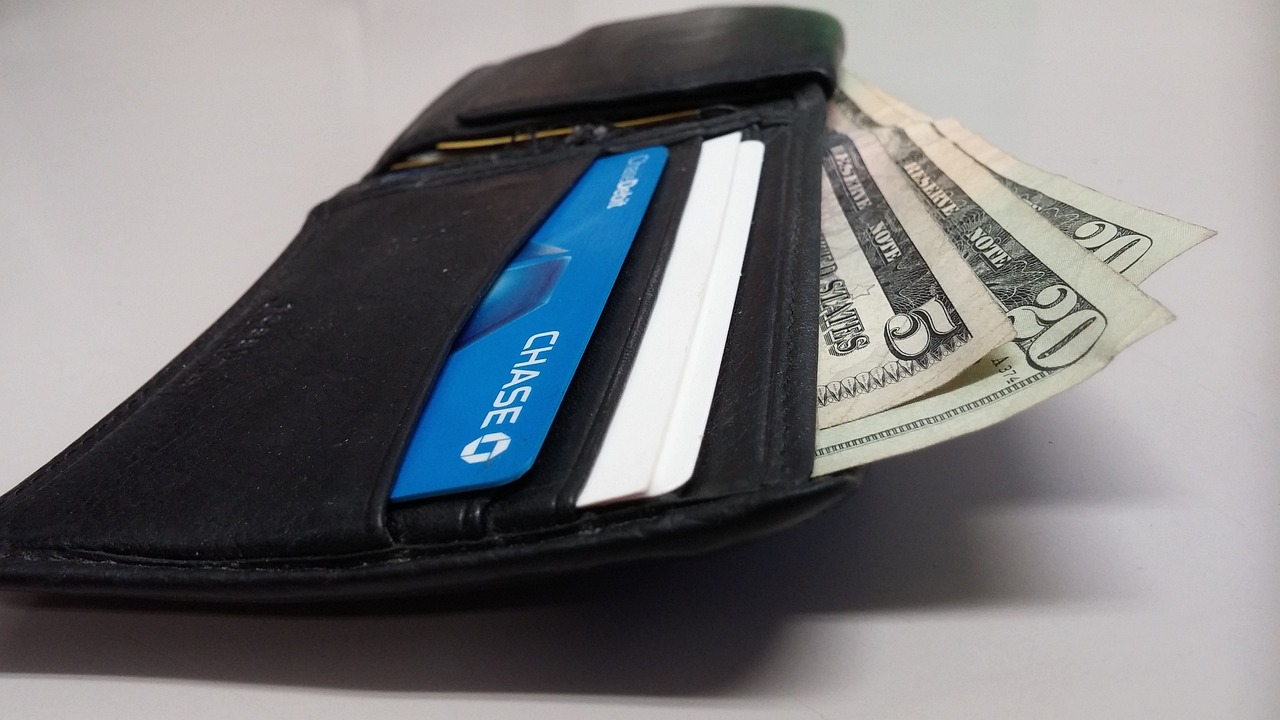
Identifying Phishing Emails
Phishing emails are like wolves in sheep's clothing; they often appear legitimate but are designed to trick you into revealing sensitive information. The key to defending yourself against these deceptive tactics lies in your ability to recognize the warning signs. First and foremost, always scrutinize the sender's email address. Cybercriminals often use addresses that closely resemble legitimate ones but contain subtle differences, such as a misspelled domain name or an unusual suffix. For instance, an email from 'support@yourbank.com' might actually come from 'support@yourb4nk.com'.
Next, pay attention to the language and tone of the email. Phishing attempts often employ urgent language, creating a sense of panic. You might see phrases like “Immediate action required!” or “Your account will be suspended!” This is a classic tactic to push you into making hasty decisions without fully assessing the situation. Legitimate companies typically communicate in a more professional and calm manner.
Another red flag is the presence of generic greetings. Phishing emails often begin with vague salutations like "Dear Customer" instead of addressing you by your name. If a company you have an account with reaches out, they should know your name! Additionally, be cautious of any email that contains unexpected attachments or links. These can easily contain malware or lead you to fake websites designed to steal your credentials. Always hover over links before clicking to see the actual URL.
To help you better identify phishing emails, here are some common characteristics to watch out for:
- Suspicious email addresses that differ slightly from legitimate ones.
- Urgent or threatening language that pressures you to act quickly.
- Generic greetings instead of personalized salutations.
- Unexpected attachments or links that prompt you to click.
By keeping these tips in mind, you can significantly reduce the risk of falling victim to phishing attacks. Remember, if something feels off about an email, it’s always better to err on the side of caution. Instead of clicking any links or responding, take a moment to verify the authenticity of the email by contacting the company directly through official channels. Your assets are worth the extra effort!
Q: What should I do if I suspect an email is a phishing attempt?
A: If you suspect an email is a phishing attempt, do not click any links or download attachments. Report the email to your email provider and delete it. You can also contact the company directly using official contact information to verify the email's legitimacy.
Q: Can phishing emails look legitimate?
A: Yes, phishing emails can often look very legitimate. Cybercriminals invest time in creating emails that mimic the style and branding of real companies. Always be vigilant and check for the signs of phishing outlined above.
Q: Is it safe to click on links in emails from known contacts?
A: Even if an email appears to come from someone you know, it's wise to be cautious. If the message seems unusual or out of character, verify with the sender through a different communication channel before clicking any links.

Safe Browsing Practices
When it comes to securing your digital wallet, adopting is crucial. Think of your online activities as walking through a crowded marketplace; just like you wouldn't leave your wallet wide open in a busy street, you shouldn't expose your sensitive information online either. Here are some essential tips that can help you navigate the web safely and protect your digital assets.
First and foremost, always ensure that the websites you visit are secure. Look for HTTPS in the URL, which indicates that the site encrypts data between your browser and the server. This is like having a secure vault for your valuables. If a site lacks this encryption, it’s a red flag that should make you think twice before entering any personal information.
Additionally, be cautious about clicking on links, especially those received through unsolicited emails or messages. Cybercriminals often use these tactics to lure you into providing sensitive information or downloading malware. It’s akin to accepting a drink from a stranger at a bar; you never know what might be in it. Always hover over links to see the actual URL before clicking, and if it looks suspicious, don’t click!
Utilizing a reputable VPN (Virtual Private Network) can also enhance your security. A VPN encrypts your internet connection, making it more challenging for hackers to intercept your data. It’s like sending your information through a secure tunnel rather than a busy street. This is especially important when using public Wi-Fi, which can be a hotbed for cyber threats.
Another effective strategy is to regularly update your web browsers and security software. Just as you would change the locks on your doors if you lost your keys, keeping your software updated protects against vulnerabilities that hackers could exploit. Most updates include patches for known security flaws, so staying current is a must.
Lastly, consider using browser extensions that enhance your security. Tools like ad blockers and anti-phishing extensions can act as your personal bodyguards while you browse. They help filter out malicious content and protect you from deceptive websites. However, remember that no tool is foolproof, so maintaining a healthy skepticism while browsing is essential.
In summary, practicing safe browsing habits is a fundamental step in securing your digital wallet. By being vigilant, using secure connections, and keeping your software up to date, you can significantly reduce the risks associated with online threats. Remember, the internet can be a wild place, but with the right precautions, you can navigate it safely.
- What is the importance of HTTPS?
HTTPS encrypts data between your browser and the website, making it harder for hackers to intercept sensitive information.
- How can I identify phishing attempts?
Look for unusual sender addresses, poor grammar, and urgent requests for personal information as common signs of phishing.
- Is using public Wi-Fi safe?
Public Wi-Fi can be risky; using a VPN and avoiding sensitive transactions on these networks can enhance your security.
- Why should I update my browser regularly?
Updates often include security patches that protect against newly discovered vulnerabilities, making your browsing experience safer.

Malware Risks
In our increasingly digital world, the threat of malware looms large, especially for those who manage digital wallets. Malware, short for malicious software, encompasses a wide range of harmful programs designed to infiltrate your devices, steal sensitive information, or even take control of your system. Imagine malware as a digital burglar, silently sneaking into your home (or device) and rummaging through your personal belongings. The consequences can be devastating, leading to financial losses and compromised personal data.
There are several types of malware that specifically target digital wallets, and it's crucial to understand them to safeguard your assets effectively. Here are a few common types:
- Keyloggers: These tools capture every keystroke you make, including passwords and wallet recovery phrases. It's like having a hidden camera recording your every move.
- Trojans: Disguised as legitimate software, Trojans trick users into downloading them, allowing hackers to gain unauthorized access to your wallet.
- Ransomware: This type of malware locks you out of your device or files until you pay a ransom. Imagine being held hostage by your own data!
To protect yourself from these threats, it's essential to adopt a proactive approach. Here are some effective strategies:
- Install reputable antivirus software: Make sure to choose a well-reviewed antivirus program that regularly updates its virus definitions. This software acts as your first line of defense against malware.
- Keep your operating system updated: Software updates often include security patches that protect against vulnerabilities. Ignoring these updates is like leaving the front door of your house wide open.
- Avoid downloading suspicious files: Be wary of downloading files from unknown sources or clicking on links in unsolicited emails. Always verify the sender's identity before taking any action.
Moreover, regular scans of your device can help detect any hidden malware before it wreaks havoc. Think of it as a routine health check-up; catching issues early can save you from significant problems down the line. If you suspect that your device has been compromised, act quickly. Disconnect from the internet, run a full system scan, and change your passwords immediately.
In conclusion, being aware of the various types of malware and implementing robust security measures can significantly reduce your risk of falling victim to these digital threats. Remember, in the realm of wallet security, knowledge is power. Stay informed, stay alert, and protect your digital assets like the valuable treasures they are.
Q: What is malware?
A: Malware is malicious software designed to harm or exploit any programmable device or network. It includes viruses, worms, trojans, and more.
Q: How can I tell if my device is infected with malware?
A: Signs of malware infection include slow performance, unexpected crashes, pop-up ads, and unfamiliar programs or icons on your device.
Q: What should I do if I suspect malware on my device?
A: Disconnect from the internet, run a full system scan with your antivirus software, and change your passwords to secure your accounts.
Q: Can I prevent malware infections?
A: Yes! You can prevent malware by keeping your software updated, using strong passwords, avoiding suspicious downloads, and installing reputable antivirus software.

Implementing Strong Passwords
In the digital age, where our lives are intertwined with technology, creating strong, unique passwords is not just a good practice; it's a necessity. Think of your password as the key to your digital vault. If your key is weak or easily duplicated, it won’t take long for someone to waltz right in and take what’s yours. So, how can you ensure that your passwords are as robust as they need to be? Let’s dive into some effective strategies.
First and foremost, the length and complexity of your password matter significantly. A strong password typically consists of at least 12 to 16 characters and includes a mix of uppercase letters, lowercase letters, numbers, and special symbols. For example, instead of using a simple password like "password123," you might create something like "P@ssW0rd!2023#". This not only makes it harder for cybercriminals to guess but also ensures that even if they use automated tools to crack passwords, they will struggle with yours.
Another essential tip is to avoid using easily accessible personal information in your passwords. While it might be tempting to use your name, birthday, or the name of a beloved pet, these details can often be found on social media or other public platforms. Instead, consider using a passphrase—a series of random words strung together that are easy for you to remember but hard for others to guess. For instance, "BlueSky$Pizza!Dance" is a memorable yet secure option.
To take your password security a step further, consider using a password manager. These tools not only help you generate strong passwords but also store them securely, so you don’t have to remember each one. This way, you can have unique passwords for each of your accounts without the hassle of trying to recall them all. Just remember to choose a reputable password manager, as this tool itself needs to be secure.
Lastly, it’s crucial to change your passwords regularly. Think of it as changing the locks on your doors. Just because you have a strong lock doesn’t mean you shouldn’t switch it out every once in a while. Set reminders to update your passwords every three to six months, and you'll significantly reduce the risk of unauthorized access to your accounts.
Here’s a quick summary of the key points when implementing strong passwords:
- Use a mix of characters: uppercase, lowercase, numbers, and symbols.
- Aim for length: 12 to 16 characters is ideal.
- Avoid personal information.
- Consider using a password manager.
- Change your passwords regularly.
By following these guidelines, you can significantly enhance your wallet security. Remember, in the realm of digital assets, a strong password is your first line of defense. Don’t let a weak password be the reason for your digital misfortunes!
Q: What is a strong password?
A: A strong password typically includes at least 12-16 characters, mixes uppercase and lowercase letters, numbers, and special symbols, and avoids personal information.
Q: How often should I change my passwords?
A: It’s recommended to change your passwords every three to six months to enhance security.
Q: What is a password manager?
A: A password manager is a tool that securely stores and manages your passwords, helping you create strong, unique passwords for each of your accounts.
Q: Can I use the same password for multiple accounts?
A: It’s not recommended. Using the same password across multiple accounts increases the risk of a security breach if one account is compromised.

Two-Factor Authentication
In today's digital landscape, where cyber threats lurk around every corner, two-factor authentication (2FA) has emerged as a vital shield for your digital wallet. Imagine it as a double lock on your front door: even if someone has the key (your password), they still can't get in without that second layer of protection. By requiring not just something you know (your password) but also something you have (like a smartphone or hardware token), 2FA significantly enhances your security.
So, how does work? When you attempt to log into your wallet, after entering your password, you’ll be prompted to provide a second form of verification. This could be a code sent to your mobile device, a fingerprint scan, or even a facial recognition check. This process makes it exponentially harder for cybercriminals to gain unauthorized access, as they would need both your password and access to your second factor, which is often much more challenging to obtain.
It's essential to understand that not all two-factor authentication methods are created equal. Some methods are more secure than others. For instance, SMS-based 2FA, where a code is sent to your phone via text, is better than nothing but can be vulnerable to interception. On the other hand, using an authenticator app, which generates time-sensitive codes, or hardware tokens, is generally considered much safer. Here’s a quick comparison of common 2FA methods:
| Method | Security Level | Notes |
|---|---|---|
| SMS Codes | Moderate | Vulnerable to interception |
| Authenticator Apps | High | Generates codes on your device |
| Hardware Tokens | Very High | Physical device needed for access |
To implement 2FA effectively, ensure you enable it on all accounts that support it, especially your digital wallets. Many providers offer straightforward guides to set up this feature, so don’t hesitate to take that step. Remember, the extra minute it takes to authenticate your access is a small price to pay for the peace of mind that comes with enhanced security.
In conclusion, two-factor authentication isn’t just an optional add-on; it’s a crucial component of your digital security strategy. By adopting this practice, you not only protect your assets but also cultivate a habit of vigilance that can shield you from potential threats in the future. So, why leave your wallet exposed when a simple double-lock can keep it safe?
- What is two-factor authentication? - It is a security process that requires two different forms of identification to access an account.
- Why is 2FA important? - It adds an extra layer of security, making it harder for unauthorized users to access your wallet.
- How do I enable 2FA on my wallet? - Check your wallet provider's settings or help section for guidance on enabling two-factor authentication.
- Is SMS-based 2FA secure? - While better than no 2FA, SMS codes can be intercepted, making them less secure than other methods like authenticator apps or hardware tokens.
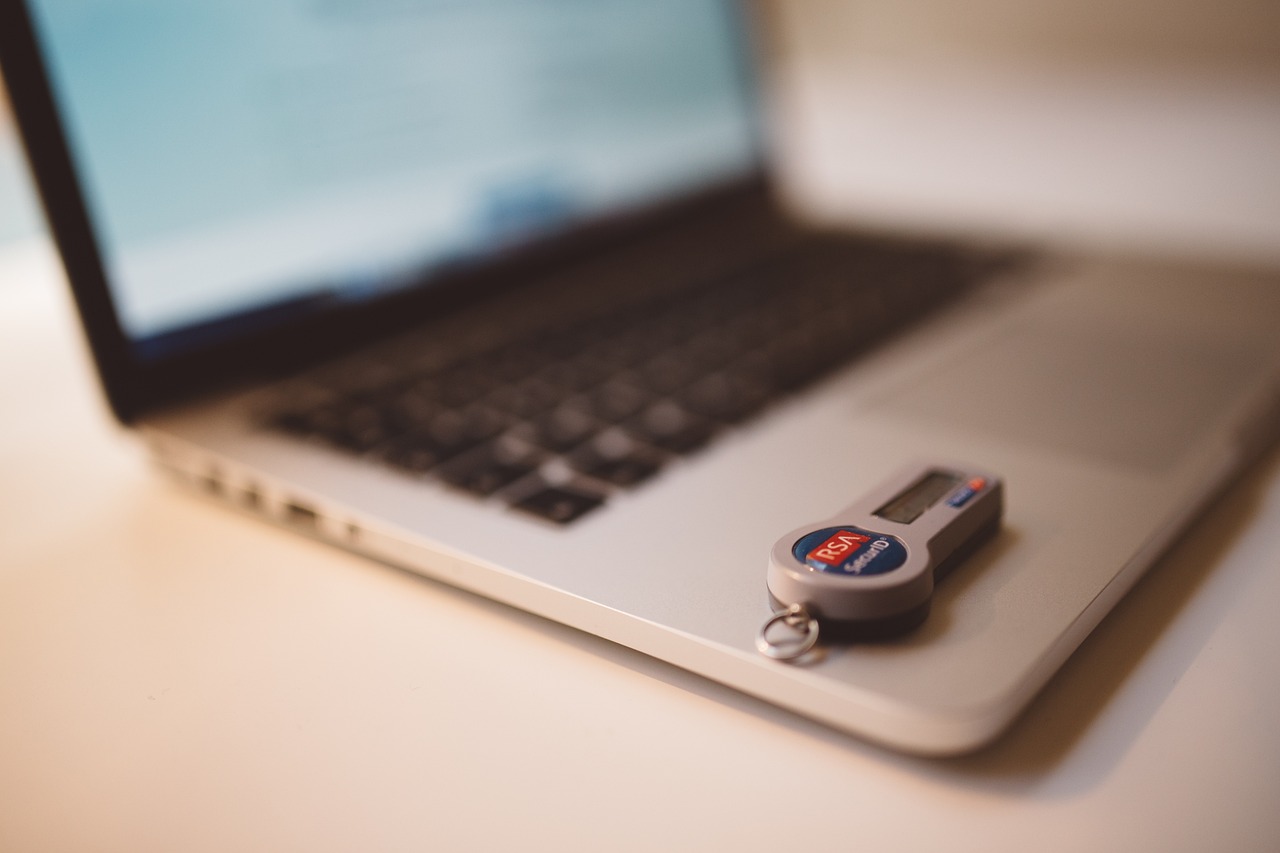
Regular Security Audits
When it comes to securing your digital wallet, are not just a good idea; they are essential. Think of these audits as routine check-ups for your wallet, similar to how you would visit a doctor for a health assessment. Just as you want to catch any health issues before they become serious, the same goes for your wallet's security. By conducting these audits, you can identify vulnerabilities and take action before they are exploited by cybercriminals.
So, what does a regular security audit entail? It involves a thorough examination of your wallet's security measures, including:
- Password strength: Are your passwords robust enough to withstand brute-force attacks?
- Two-Factor Authentication (2FA): Is 2FA enabled on your wallet?
- Software updates: Are you running the latest version of your wallet software?
- Transaction history: Have you reviewed your transaction history for any unauthorized activity?
To make this process easier, consider creating a security audit checklist. This checklist can serve as a roadmap for your audits, ensuring you don’t overlook any crucial aspects. Here’s a simple example:
| Audit Item | Status | Notes |
|---|---|---|
| Password Strength | [ ] Weak [ ] Moderate [ ] Strong | Change if weak |
| 2FA Enabled | [ ] Yes [ ] No | Enable if not |
| Software Version | [ ] Up to date [ ] Outdated | Update if outdated |
| Transaction Review | [ ] Reviewed [ ] Not reviewed | Check for unauthorized transactions |
By regularly reviewing this checklist, you can stay ahead of potential threats and ensure that your wallet remains secure. Moreover, consider setting a recurring reminder on your calendar to perform these audits, whether it’s monthly, quarterly, or biannually. Consistency is key!
In addition to self-assessments, don’t hesitate to seek professional advice. Cybersecurity experts can provide deeper insights into your wallet's security posture and recommend advanced measures tailored to your specific needs. Remember, the digital landscape is constantly evolving, and staying informed is your best defense.
Q: How often should I conduct a security audit on my wallet?
A: It’s advisable to conduct a security audit at least once every three months, but monthly audits can provide an extra layer of security.
Q: What should I do if I find a vulnerability during my audit?
A: If you discover a vulnerability, take immediate action to address it. Change your passwords, enable 2FA, and consider consulting with a cybersecurity professional.
Q: Can I perform a security audit myself?
A: Yes, you can perform a self-audit using a checklist. However, for more thorough assessments, consider seeking professional help.
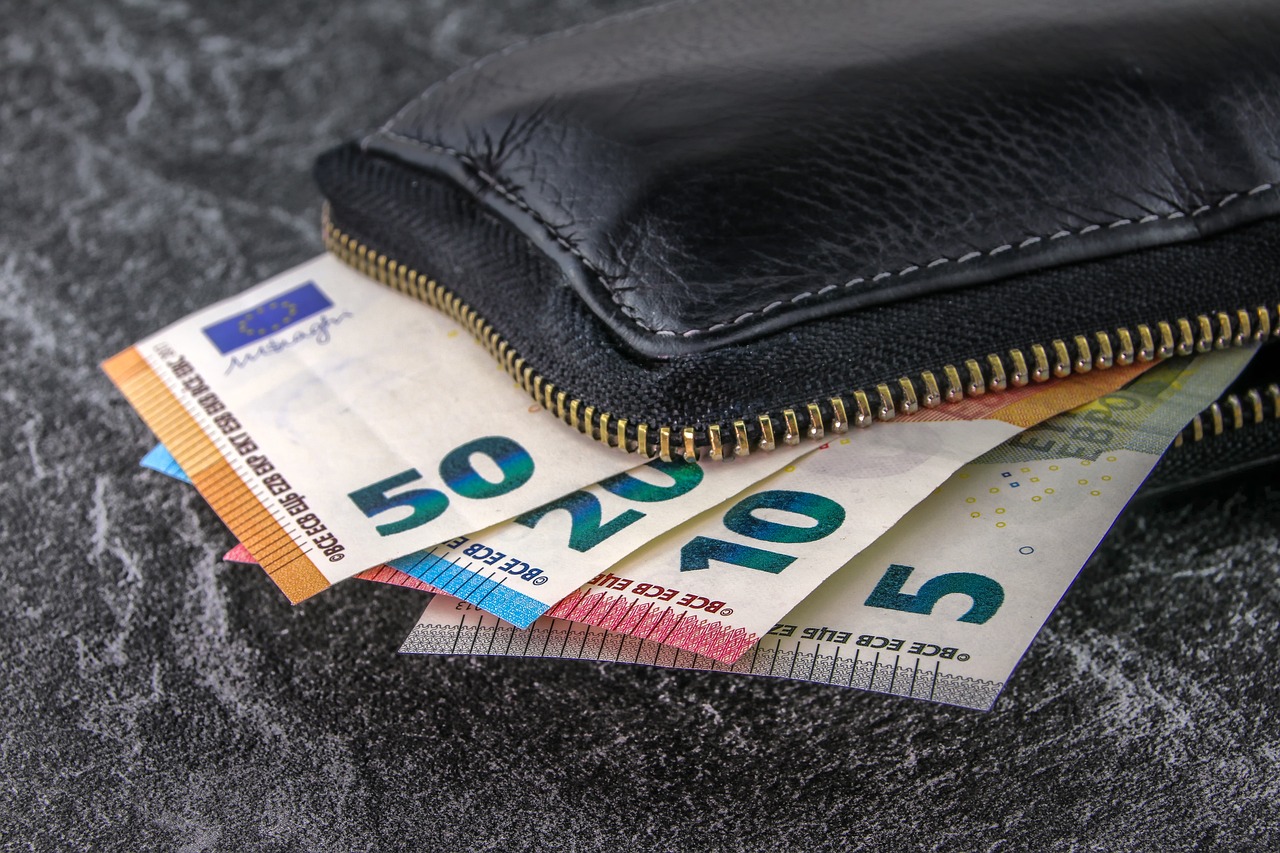
Staying Informed About Security Updates
In today's fast-paced digital landscape, where threats to wallet security are constantly evolving, is more crucial than ever. Just like you wouldn’t ignore a warning light on your car’s dashboard, you shouldn’t overlook updates from your wallet provider. These updates often contain vital patches for vulnerabilities that cybercriminals could exploit. By keeping your wallet software up to date, you’re essentially adding another layer of protection to your digital assets.
Wallet providers regularly release updates to address security flaws and improve the overall user experience. These updates can include anything from fixing bugs to enhancing encryption protocols. To ensure you don’t miss out on these important updates, consider enabling automatic updates if the option is available. This way, you can rest easy knowing that your wallet is always equipped with the latest security measures without having to lift a finger.
Moreover, it’s not just about applying updates; it’s also about understanding what those updates entail. Many wallet providers publish release notes or changelogs that detail what changes have been made. Taking the time to read these notes can give you insight into the specific threats being addressed and help you understand the importance of the update. This knowledge can empower you to make informed decisions about your wallet security.
Another effective way to stay informed is to follow reputable security blogs and forums that focus on digital wallet security. These platforms often discuss the latest vulnerabilities, emerging threats, and best practices for safeguarding your assets. Subscribing to these resources can keep you in the loop, allowing you to anticipate potential risks before they affect you. Community discussions can also be incredibly beneficial. Engaging with other users can provide practical insights and tips that you might not find in official documentation.
To further enhance your knowledge, consider the following resources:
- Security Blogs: Websites like Krebs on Security and The Hacker News provide in-depth articles on security threats and updates.
- Community Forums: Platforms like Reddit and Bitcointalk allow users to share experiences and advice regarding wallet security.
- Official Wallet Provider Channels: Follow your wallet provider on social media or subscribe to their newsletter for real-time updates.
In summary, staying informed about security updates is not just a recommendation; it’s a necessity in today’s digital age. By actively seeking out information and engaging with the community, you can significantly bolster your wallet's security and protect your valuable assets from potential threats.
1. Why are security updates important for my digital wallet?
Security updates patch vulnerabilities that could be exploited by cybercriminals, ensuring your assets remain safe.
2. How can I stay updated on the latest security threats?
Following reputable security blogs, joining community forums, and subscribing to your wallet provider's updates can keep you informed.
3. What should I do if I miss an important update?
Check your wallet provider’s website for the latest updates and apply any missed updates immediately to protect your wallet.
4. Is it safe to enable automatic updates?
Yes, enabling automatic updates is generally safe and ensures that your wallet is always equipped with the latest security features.

Following Security Blogs
Staying informed about the latest trends and threats in wallet security is crucial for anyone who handles digital assets. One of the most effective ways to achieve this is by following reputable security blogs. These blogs serve as a treasure trove of information, offering insights into emerging threats, best practices, and expert opinions. Just like a lighthouse guiding ships away from rocky shores, these blogs illuminate the often murky waters of digital security.
When selecting security blogs to follow, consider those that are well-established and respected in the cybersecurity community. Look for authors who are industry experts and have a track record of providing accurate and actionable information. Some blogs even offer newsletters that deliver the latest updates directly to your inbox, making it easier to stay informed without having to constantly search for new content.
Here are a few key benefits of following security blogs:
- Timely Updates: Security threats evolve rapidly, and following blogs ensures you receive timely updates about vulnerabilities and new attack vectors.
- Expert Insights: Many blogs feature articles written by cybersecurity professionals who share their knowledge and experiences, helping you understand complex topics.
- Community Engagement: Engaging with the comments section or forums associated with these blogs can provide additional perspectives and tips from other readers.
In addition to individual blogs, consider subscribing to platforms that aggregate cybersecurity news. These platforms can provide a broader overview of the security landscape, helping you spot trends and common threats that may affect your digital wallet.
Remember, knowledge is power, especially in the realm of digital security. By following the right security blogs, you’re not just passively consuming information; you’re actively empowering yourself to make informed decisions that can protect your digital assets from potential threats. So, grab your favorite beverage, dive into these blogs, and stay one step ahead of cybercriminals!
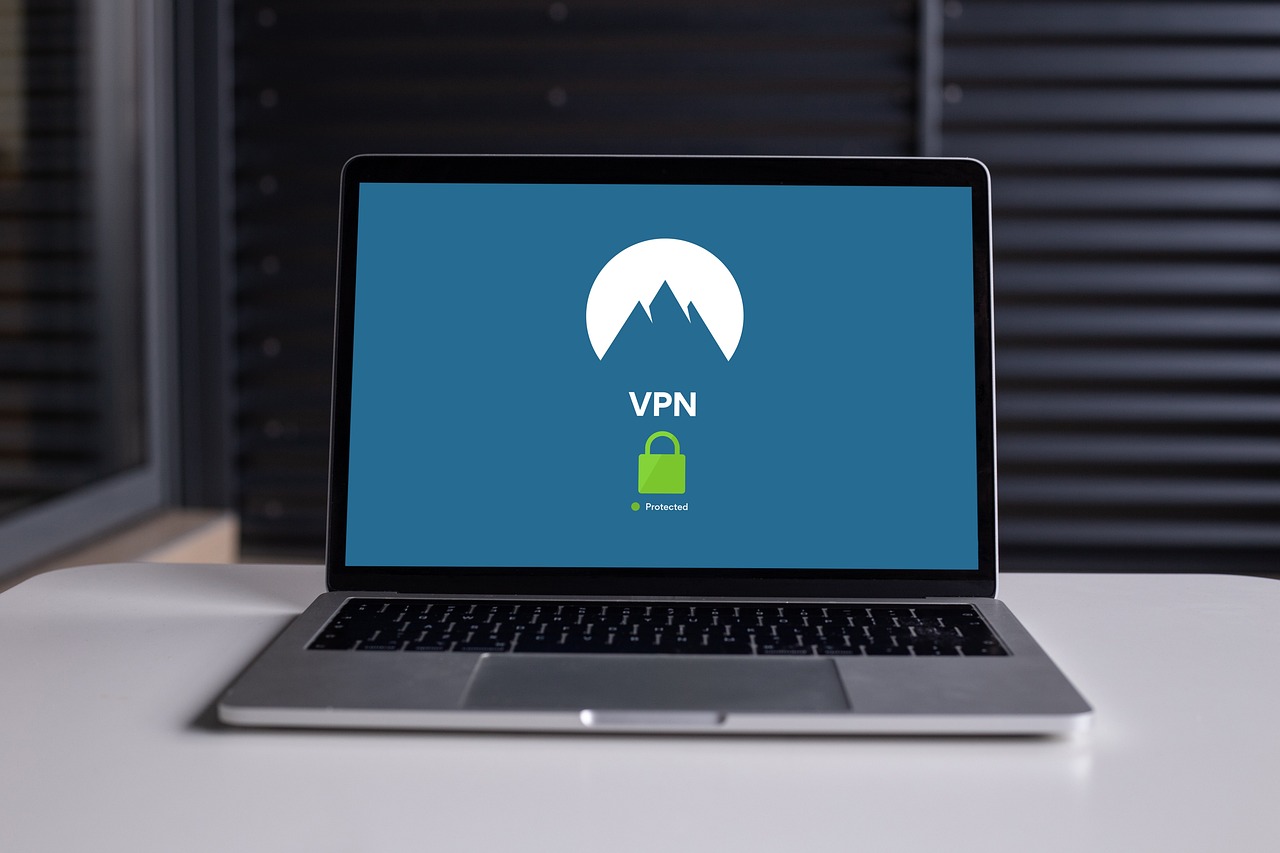
Community Forums and Discussions
Engaging in community forums and discussions can be a game-changer when it comes to enhancing your wallet security. Think of these forums as bustling marketplaces where individuals exchange ideas, experiences, and insights about digital wallets. By participating in these discussions, you not only gain valuable knowledge but also contribute to a collective understanding of security practices that can protect your assets. It's like having a group of friends who are all looking out for each other, sharing tips and tricks to avoid the pitfalls of the digital world.
One of the greatest advantages of community forums is the diversity of perspectives they offer. You might find a user who has faced a specific threat and has successfully navigated it, sharing their experience and the lessons learned. This real-world insight can be more beneficial than any textbook advice. Additionally, many forums have dedicated sections for security-related topics, where users can post questions and receive answers from seasoned experts in the field. This interactive environment fosters a sense of camaraderie and encourages users to stay vigilant.
Moreover, discussions often revolve around the latest trends in cybersecurity. For example, if a new phishing scam emerges or a vulnerability is discovered in a popular wallet application, you can bet that the community will be buzzing with information. By keeping your ear to the ground in these forums, you can stay ahead of potential threats and take proactive measures to protect your wallet. It’s like having a personal security alert system that notifies you of any dangers lurking in the digital shadows.
To get started, consider joining some popular forums or platforms such as Reddit, Bitcointalk, or specialized cryptocurrency communities. Here are a few tips to maximize your experience:
- Be Active: Regular participation increases your visibility and helps you build relationships with other members.
- Ask Questions: Don’t hesitate to seek advice on specific security concerns or general wallet management.
- Share Your Knowledge: If you’ve learned something valuable, share it! Your insights could help someone else avoid a costly mistake.
- Stay Respectful: Always maintain a respectful tone, even when discussions get heated. A positive community thrives on mutual respect.
In conclusion, community forums and discussions are invaluable resources for anyone looking to bolster their wallet security. By tapping into the collective wisdom of fellow users, you can stay informed, share experiences, and ultimately create a safer digital environment for yourself and others. So, dive into these communities, engage with others, and watch your understanding of wallet security grow exponentially!
Q1: What are the best community forums for discussing wallet security?
A1: Some of the best forums include Reddit, Bitcointalk, and specialized cryptocurrency communities. These platforms offer a wealth of information and user experiences related to wallet security.
Q2: How can I ensure the information I get from forums is reliable?
A2: Look for posts from verified users or those with a strong reputation in the community. Engaging with experienced members can also help you discern credible information.
Q3: Can participating in forums actually improve my wallet security?
A3: Absolutely! By sharing knowledge and staying updated on the latest threats, you can adopt better security practices and protect your digital assets more effectively.

Conclusion: Best Practices for Wallet Security
In the ever-evolving landscape of digital finance, securing your wallet is not just a recommendation; it’s a necessity. By implementing the strategies discussed throughout this article, you can significantly bolster your wallet's defenses against potential threats. Remember, security is a continuous process, not a one-time setup. Here are some of the best practices to keep in mind:
- Understand Your Wallet Type: Familiarize yourself with the different types of wallets—hot, cold, software, and hardware. Each has its own set of security features and vulnerabilities, so choose wisely based on your needs.
- Create Strong Passwords: Your password is your first line of defense. Use a mix of letters, numbers, and symbols, and consider using a password manager to keep track of them.
- Enable Two-Factor Authentication: This adds an extra layer of security, making it significantly harder for unauthorized users to access your wallet.
- Stay Informed: Regularly check for updates from your wallet provider and follow security blogs to stay ahead of emerging threats.
- Conduct Regular Security Audits: Periodically review your wallet's security settings and practices to identify and address any vulnerabilities.
By incorporating these practices into your digital routine, you not only protect your assets but also gain peace of mind in an increasingly digital world. Think of your wallet as a treasure chest; the more locks you have, the harder it is for thieves to get in. So take the time to secure your digital treasure!
To further assist you in navigating wallet security, here are some commonly asked questions:
- What is the safest type of wallet? Cold wallets, such as hardware wallets, are generally considered the safest option since they store your assets offline.
- How often should I change my password? It’s a good practice to change your passwords every few months and immediately if you suspect any unauthorized access.
- What should I do if I fall victim to a phishing attack? If you believe you've been compromised, change your passwords immediately and contact your wallet provider for further guidance.
- Is two-factor authentication mandatory? While not mandatory, it is highly recommended as it adds an essential layer of security to your wallet.
By keeping these best practices and FAQs in mind, you can navigate the complexities of wallet security with confidence and protect your digital assets effectively.
Frequently Asked Questions
- What is the difference between hot and cold wallets?
Hot wallets are connected to the internet and are great for quick access to your funds, but they come with higher risks. Cold wallets, on the other hand, are offline and provide enhanced security for long-term storage. Think of hot wallets as your everyday wallet for cash, while cold wallets are like a safe in your home.
- How can I recognize phishing attacks?
Phishing attacks often come in the form of emails or messages that look legitimate but are designed to trick you. Look for suspicious links, poor grammar, or requests for personal information. If something feels off, it probably is! Always double-check the sender's email address and hover over links to see where they lead before clicking.
- What types of malware should I be aware of?
Common types of malware include keyloggers, which capture your keystrokes, and ransomware, which locks you out of your device until you pay a fee. Keeping your antivirus software updated and avoiding downloads from unknown sources can help protect you from these threats.
- Why is two-factor authentication (2FA) important?
2FA adds an extra layer of security by requiring not just your password but also a second piece of information, like a code sent to your phone. It's like having a second lock on your door—just because someone has your key doesn't mean they can get in easily!
- How often should I conduct security audits of my wallet?
It's a good idea to perform security audits every few months or whenever you notice unusual activity. Regular checks help you identify any vulnerabilities and ensure your wallet remains secure. Think of it like a routine health check-up for your digital assets.
- Where can I find reliable security updates for my wallet?
Check the official website of your wallet provider or follow their social media channels for updates. Additionally, subscribing to reputable security blogs can keep you informed about the latest threats and best practices. Staying updated is like having a weather app that warns you before a storm hits!
- How can community forums help with wallet security?
Community forums allow users to share experiences, tips, and advice on wallet security. Engaging with others can provide insights into potential risks and effective strategies. It’s like having a support group where everyone shares their best practices and learns from each other!





